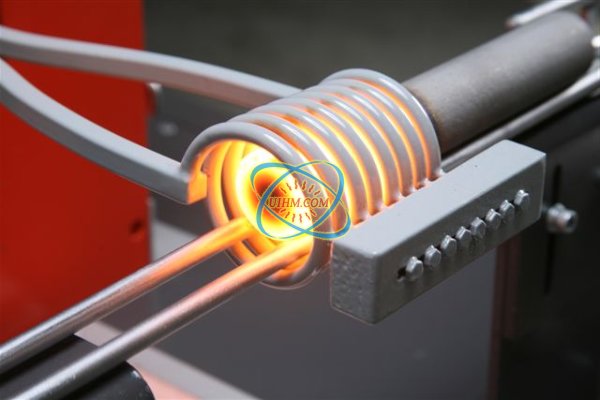
induction heating
What is Induction Heating?
Induction heating is the process of heating an electrically conducting object (usually a metal) by electromagnetic induction, where eddy currents (also called Foucault currents) are generated within the metal and resistance leads to Joule heating of the metal.
An induction heater (for any process) consists of an induction coil (or electromagnet), through which a high-frequency alternating current (AC) is passed. Heat may also be generated by magnetic hysteresis losses in materials that have significant relative permeability.
The frequency of AC used depends on the object size, material type, coupling (between the work coil and the object to be heated) and the penetration depth.
High Frequency Induction heating is a process which is used to bond, harden or soften metals or other conductive materials. For many modern manufacturing processes, induction heating offers an attractive combination of speed, consistency and control.
The basic principles of induction heating have been understood and applied to manufacturing since the 1920s. During World War II, the technology developed rapidly to meet urgent wartime requirements for a fast, reliable process to harden metal engine parts. More recently, the focus on lean manufacturing techniques and emphasis on improved quality control have led to a rediscovery of induction technology, along with the development of precisely controlled, all solid state induction power supplies.
What makes this heating method so unique? In the most common heating methods, a torch or open flame is directly applied to the metal part. But with induction heating, heat is actually "induced" within the part itself by circulating electrical currents.
Induction heating relies on the unique characteristics of radio frequency (RF) energy - that portion of the electromagnetic spectrum below infrared and microwave energy. Since heat is transferred to the product via electromagnetic waves, the part never comes into direct contact with any flame, the inductor itself does not get hot , and there is no product contamination. When properly set up, the process becomes very repeatable and controllable.
How Induction Heating Works
How exactly does induction heating work? It helps to have a basic understanding of the principles of electricity. When an alternating electrical current is applied to the primary of a transformer, an alternating magnetic field is created. According to Faraday's Law, if the secondaryof the transformer is located within the magnetic field, an electric current will be induced. 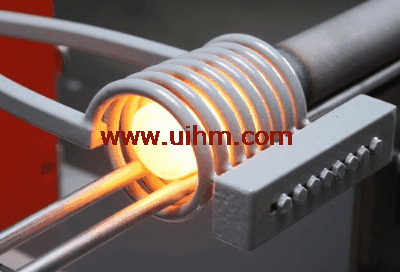
In a basic induction heating setup shown at right, a solid state RF power supply sends an AC current through an inductor (often a copper coil),and the part to be heated (the workpiece) is placed inside the inductor. The inductor serves as the transformer primary and the part to be heated becomes a short circuit secondary. When a metal part is placed within the inductor and enters the magnetic field, circulating eddy currents are induced within the part.
As shown in the second diagram, these eddy currents flow against the electrical resistivity of the metal, generating precise and localized heat without any direct contact between the part and the inductor. This heating occurs with both magnetic and non-magnetic parts, and is often referred to as the "Joule effect", referring to Joule's first law – a scientific formula expressing the relationship between heat produced by electrical current passed through a conductor.
Secondarily, additional heat is produced within magnetic parts through hysteresis – internal friction that is created when magnetic parts pass through the inductor. Magnetic materials naturally offer electrical resistance to the rapidly changing magnetic fields within the inductor. This resistance produces internal friction which in turn produces heat.
In the process of heating the material, there is therefore no contact between the inductor and the part, and neither are there any combustion gases. The material to be heated can be located in a setting isolated from the power supply; submerged in a liquid, covered by isolated substances, in gaseous atmospheres or even in a vacuum.
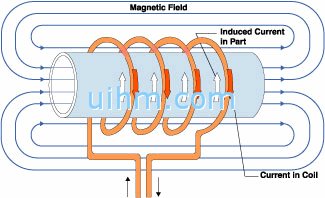
Important Factors to Consider
The efficiency of an induction heating system for a specific application depends on several factors: the characteristics of the part itself, the design of the inductor, the capacity of the power supply, and the amount of temperature change required for the application.
The Characteristics of the Part
METAL OR PLASTIC
First, induction heating works directly only with conductive materials, normally metals. Plastics and other non-conductive materials can often be heated indirectly by first heating a conductive metal susceptor which transfers heat to the non-conductive material.
MAGNETIC OR NON-MAGNETIC
It is easier to heat magnetic materials. In addition to the heat induced by eddy currents, magnetic materials also produce heat through what is called the hysteresis effect (described above). This effect ceases to occur at temperatures above the "Curie" point - the temperature at which a magnetic material loses its magnetic properties. The relative resistance of magnetic materials is rated on a “permeability” scale of 100 to 500; while non-magnetics have a permeability of 1, magnetic materials can have a permeability as high as 500.
THICK OR THIN
With conductive materials, about 85% of the heating effect occurs on the surface or "skin"
of the part; the heating intensity diminishes as the distance from the surface increases.
So small or thin parts generally heat more quickly than large thick parts, especially if the larger parts need to be heated all the way through.
Research has shown a relationship between the frequency of the alternating current and
the heating depth of penetration: the higher the frequency, the shallower the heating in the part. Frequencies of 100 to 400 kHz produce relatively high-energy heat, ideal for quickly heating small parts or the surface/skin of larger parts. For deep, penetrating heat, longer heating cycles at lower frequencies of 5 to 30 kHz have been shown to be most effective.
RESISTIVITY
If you use the exact same induction process to heat two same size pieces of steel and copper, the results will be quite different. Why? Steel – along with carbon, tin and tungsten
– has high electrical resistivity. Because these metals strongly resist the current flow, heat builds up quickly. Low resistivity metals such as copper, brass and aluminum take longer
to heat. Resistivity increases with temperature, so a very hot piece of steel will be more
receptive to induction heating than a cold piece.
Inductor Design
It is within the inductor that the varying magnetic field required for induction heating is developed through the flow of alternating current. So inductor design is one of the most important aspects of the overall system. A well-designed inductor provides the proper heating pattern for your part and maximizes the efficiency of the induction heating power supply, while still allowing easy insertion and removal of the part.
Power Supply Capacity
The size of the induction power supply required for heating a particular part can be easily calculated. First, one must determine how much energy needs to be transferred to the work-piece. This depends on the mass of the material being heated, the specific heat of the material, and the rise in temperature required. Heat losses from conduction, convection and radiation should also be considered.
Degree of Temperature Change Required
Finally, the efficiency of induction heating for specific application depends on the amount of temperature change required. A wide range of temperature changes can be accomodated; as a rule of thumb, more induction heating power is generally utilized to increase the degree of temperature change.
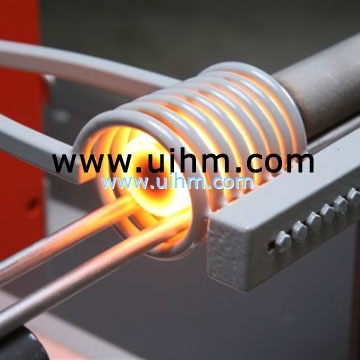
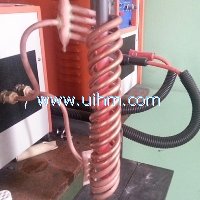
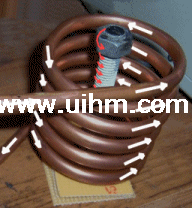
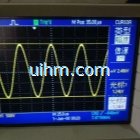
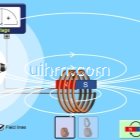
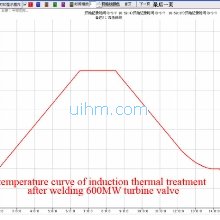
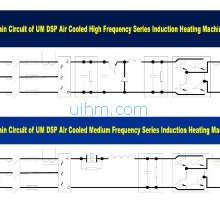

Newest Comment
Please kindly send me your latest catalog. Also, inform me about the Minimum Order Quantity, Delivery time or FOB, and payment terms warranty.Please contact us soon
Your early reply is highly appreciated.
Thank You!
Best Regards,
______________________________
Mr Jun kung
(Purchasing Manager)
Mighty group multiple Trades Co, Ltd.
Address 220, Seongnam Venture Town, 437, Sujin 2, Sujeoung, Seongnam, Gyeonggi-Do,
8206
Tel:+82-31-632-2718
Email: [email protected]
Post Comment